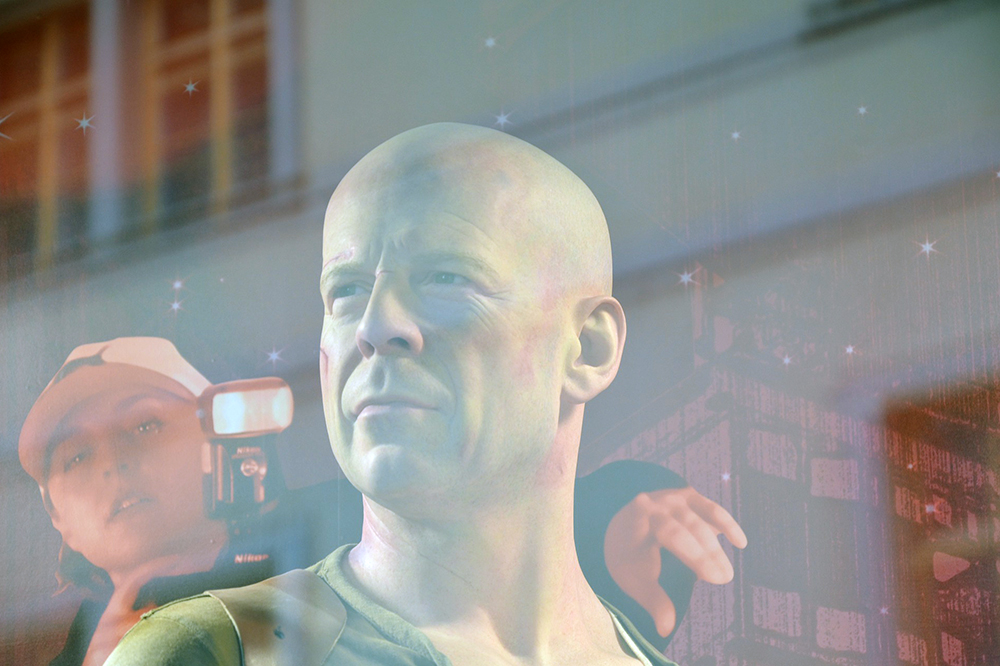According to the Telegraph, Bruce Willis “has become the first Hollywood star to sell his rights to allow a ‘digital twin’ of himself to be created for use on screen” (Telegraph, 28 September 2022). Instead of a digital twin, we can also speak of a new kind of avatar here. “Using deepfake technology, the actor appeared in a phone advert without ever being on set, after his face was digitally transplanted onto another performer.” (Telegraph, 28 September 2022) In a statement on the website of the responsible US firm Deepcake, Willis said: “I liked the precision of my character. It’s a great opportunity for me to go back in time. The neural network was trained on content of ‘Die Hard’ and ‘Fifth Element’, so my character is similar to the images of that time. With the advent of the modern technology, I could communicate, work and participate in filming, even being on another continent. It’s a brand new and interesting experience for me, and I grateful to our team.” (Website Deepcake) The actor will certainly find many imitators. The new avatars will soon be a natural part of advertising. Whether they will also be part of films has not yet been clarified. For most actors, including Bruce Willis, such a licensing would probably go too far.
Programming Machine Ethics
The book “Programming Machine Ethics” (2016) by Luís Moniz Pereira and Ari Saptawijaya is available for free download from Z-Library. Luís Moniz Pereira is among the best-known machine ethicists. “This book addresses the fundamentals of machine ethics. It discusses abilities required for ethical machine reasoning and the programming features that enable them. It connects ethics, psychological ethical processes, and machine implemented procedures. From a technical point of view, the book uses logic programming and evolutionary game theory to model and link the individual and collective moral realms. It also reports on the results of experiments performed using several model implementations. Opening specific and promising inroads into the terra incognita of machine ethics, the authors define here new tools and describe a variety of program-tested moral applications and implemented systems. In addition, they provide alternative readings paths, allowing readers to best focus on their specific interests and to explore the concepts at different levels of detail.” (Information by Springer) The download link is eu1lib.vip/book/2677910/9fd009.
Defining Tomorrow
Animal-computer interaction (ACI) “is a rapidly growing field, which focuses on the interaction between animals and computing-enabled technology and for which the International Conference on Animal-Computer Interaction is the main convention venue” (Website ACI2022). ACI2022 will take place 5-8 December 2022, hosted by Northumbria University, Newcastle upon Tyne, UK. The “Emerging Work” track reflects early stage efforts that either: “1) will be of interest to the ACI community and likely to generate insightful, instructional, and/or spirited discussion, and/or 2) is early enough that it could benefit greatly from community feedback on direction, design, methods, etc.” (Website ACI2022) In this track, the paper “A Face Recognition System for Bears: Protection for Animals and Humans in the Alps” by Oliver Bendel and Ali Yürekkirmaz was accepted. It fits very well with this year’s conference theme, “Defining Tomorrow”. “The theme acknowledges the rapid growth in technology for animals with new products coming onto the market, normalising the use of technology in many human-animal relationships, and asks: where should we go next?” (Website ACI2022)
Plastic Waste in the Pacific Comes from the Fishing Industry
The Ocean Cleanup project has analyzed the plastic waste it has fished out of the sea. The results were published in a paper. From the abstract: “The subtropical oceanic gyre in the North Pacific Ocean is currently covered with tens of thousands of tonnes of floating plastic debris, dispersed over millions of square kilometres. A large fraction is composed of fishing nets and ropes while the rest is mostly composed of hard plastic objects and fragments, sometimes carrying evidence on their origin. In 2019, an oceanographic mission conducted in the area, retrieved over 6000 hard plastic debris items > 5 cm. The debris was later sorted, counted, weighed, and analysed for evidence of origin and age. Our results, complemented with numerical model simulations and findings from a previous oceanographic mission, revealed that a majority of the floating material stems from fishing activities. While recent assessments for plastic inputs into the ocean point to coastal developing economies and rivers as major contributors into oceanic plastic pollution, here we show that most floating plastics in the North Pacific subtropical gyre can be traced back to five industrialised fishing nations, highlighting the important role the fishing industry plays in the solution to this global issue.” (Abstract) In a final thesis at the University of Applied Sciences and Arts Northwestern Switzerland FHNW in 2019, a student described and evaluated six projects for the disposal of plastic waste in seas. An overview can be found here. The Ocean Cleanup was also discussed, beside the WasteShark that sticks out as a robot.



